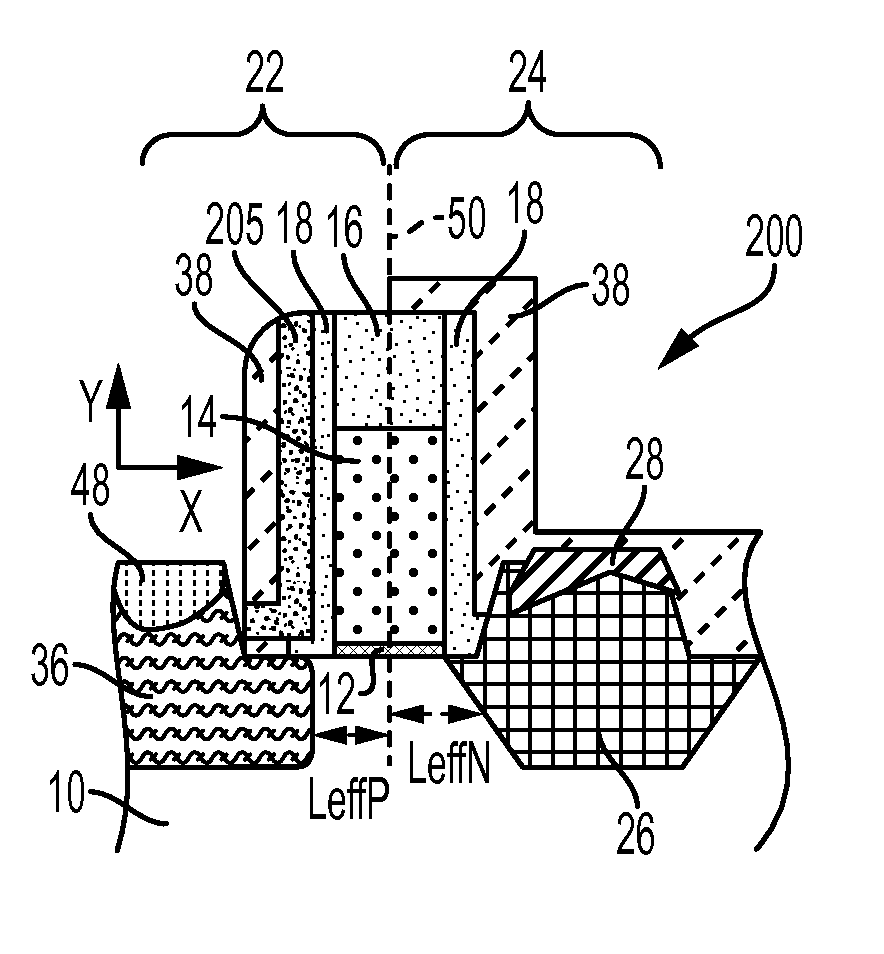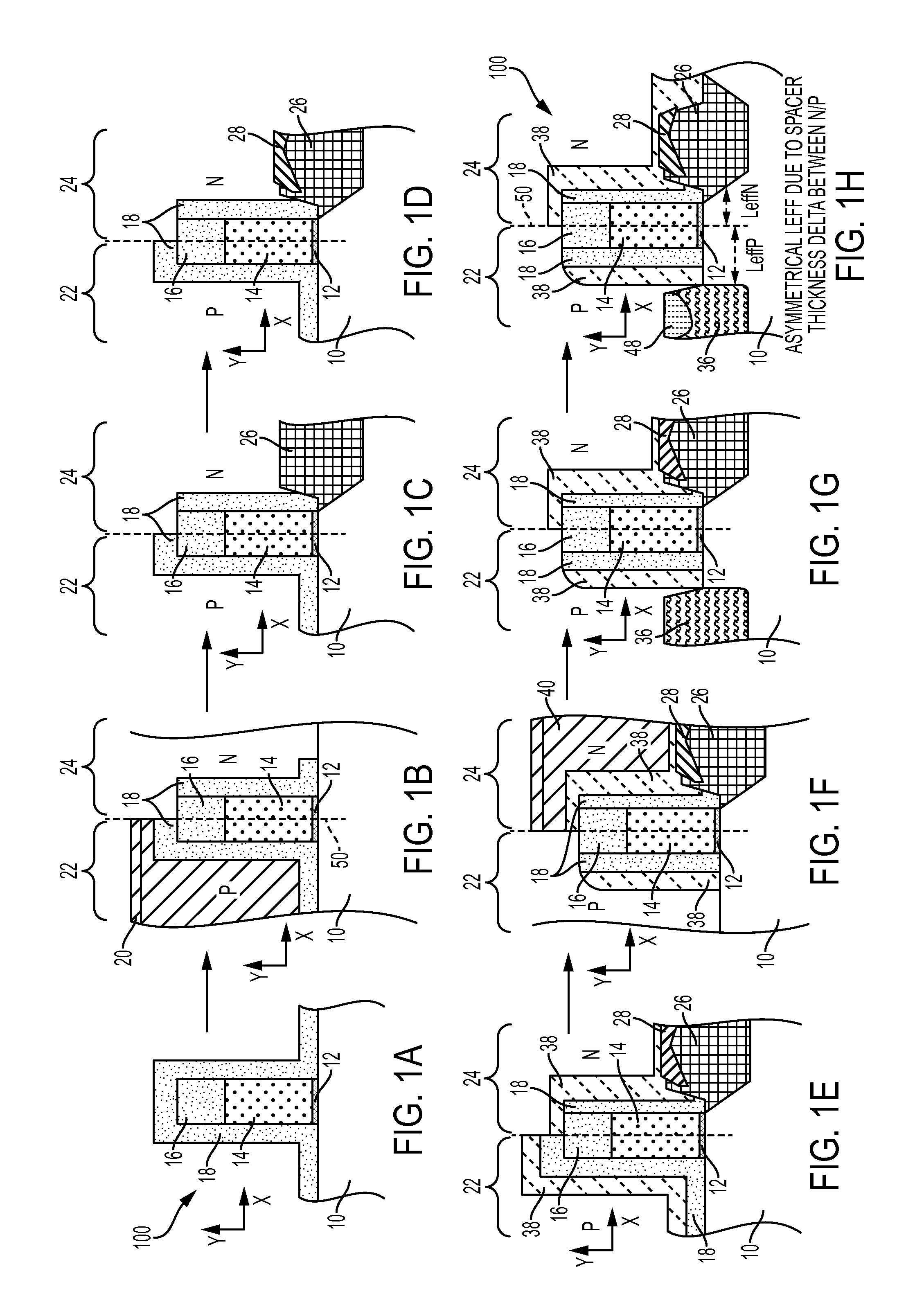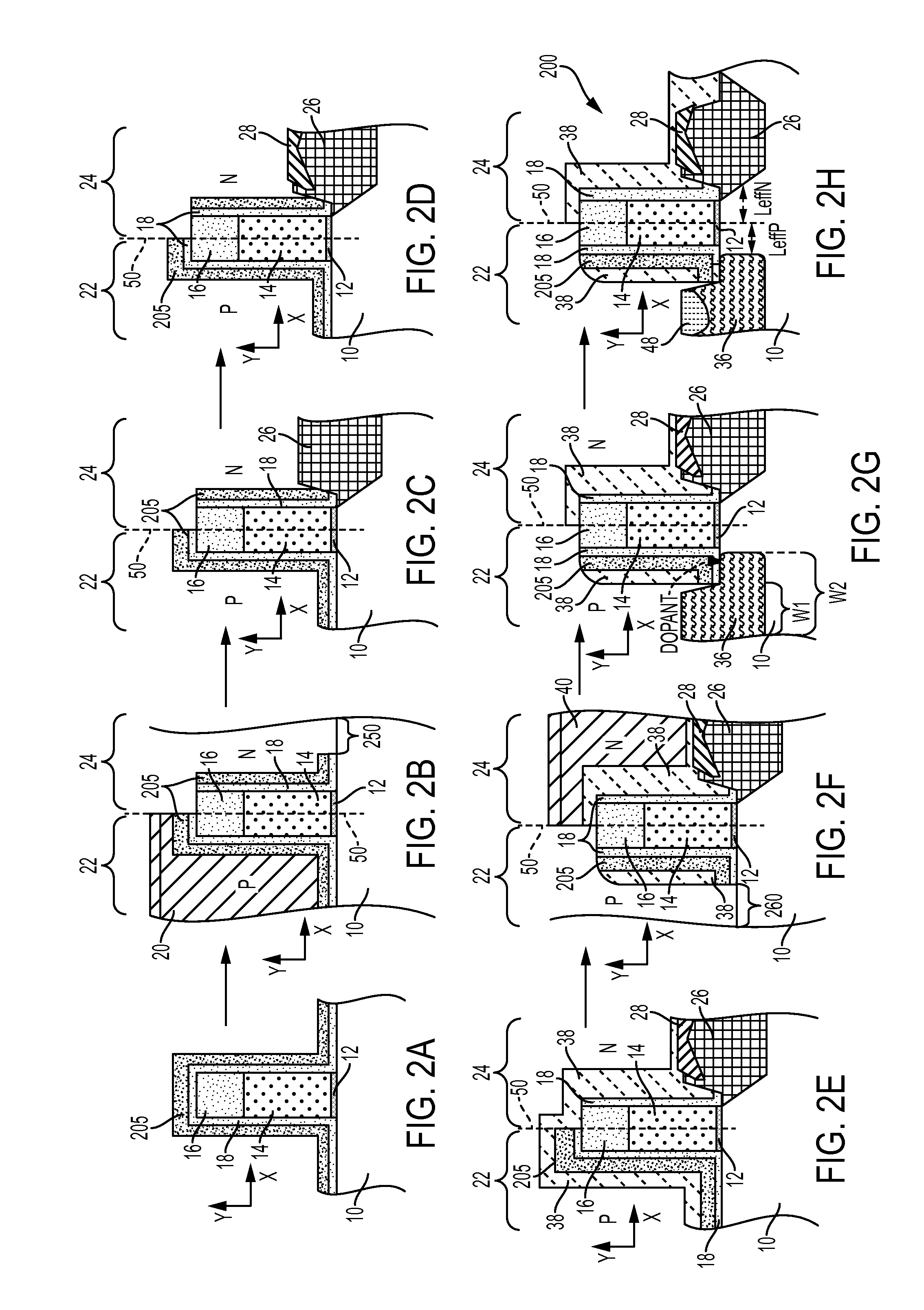Symmetrical extension junction formation with low-k spacer and dual epitaxial process in finfet device
a technology of low-k spacer and extension junction, which is applied in the direction of semiconductor devices, basic electric elements, electrical equipment, etc., can solve the problem of difficult to completely turn off the transistor
- Summary
- Abstract
- Description
- Claims
- Application Information
AI Technical Summary
Benefits of technology
Problems solved by technology
Method used
Image
Examples
Embodiment Construction
[0028]Dual spacer and dual epitaxial layers (epi) for n-type (n-channel) field effect transistors (NFET) and p-type (p-channel) field effect transistors (PFET) are utilized to optimize the junction between the n-type and p-type (such as the source / drain) regions, thereby growing the fins (i.e., epitaxial layers) of the finFET device.
[0029]FinFET technology features a dual epitaxial layer process for damage-less conformal diffusion during extension junction formation. One issue with the dual epitaxial layer process is epitaxial overburden which causes parasitic capacitance. Embodiments utilize a low-k spacer to address the epitaxial overburden that causes parasitic capacitance in the dual epitaxial layer process.
[0030]Another issue in the dual epitaxial layer process is the introduction of block nitride (e.g., 3 nm). The purpose of the block nitride is to block the epitaxial layer formation from either side as its name suggests, such that each epitaxial layer remains on its own side....
PUM
 Login to View More
Login to View More Abstract
Description
Claims
Application Information
 Login to View More
Login to View More - R&D
- Intellectual Property
- Life Sciences
- Materials
- Tech Scout
- Unparalleled Data Quality
- Higher Quality Content
- 60% Fewer Hallucinations
Browse by: Latest US Patents, China's latest patents, Technical Efficacy Thesaurus, Application Domain, Technology Topic, Popular Technical Reports.
© 2025 PatSnap. All rights reserved.Legal|Privacy policy|Modern Slavery Act Transparency Statement|Sitemap|About US| Contact US: help@patsnap.com



